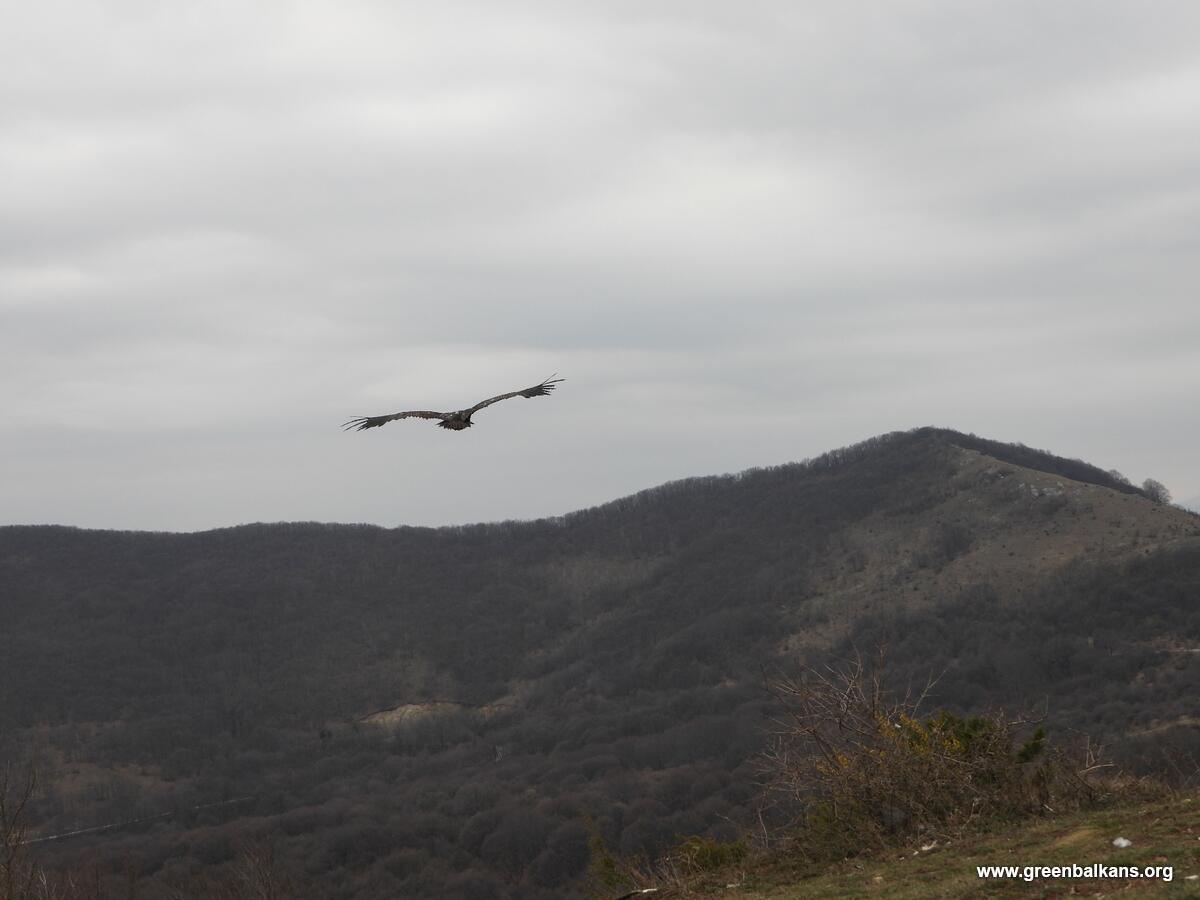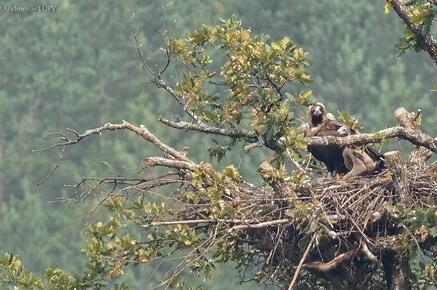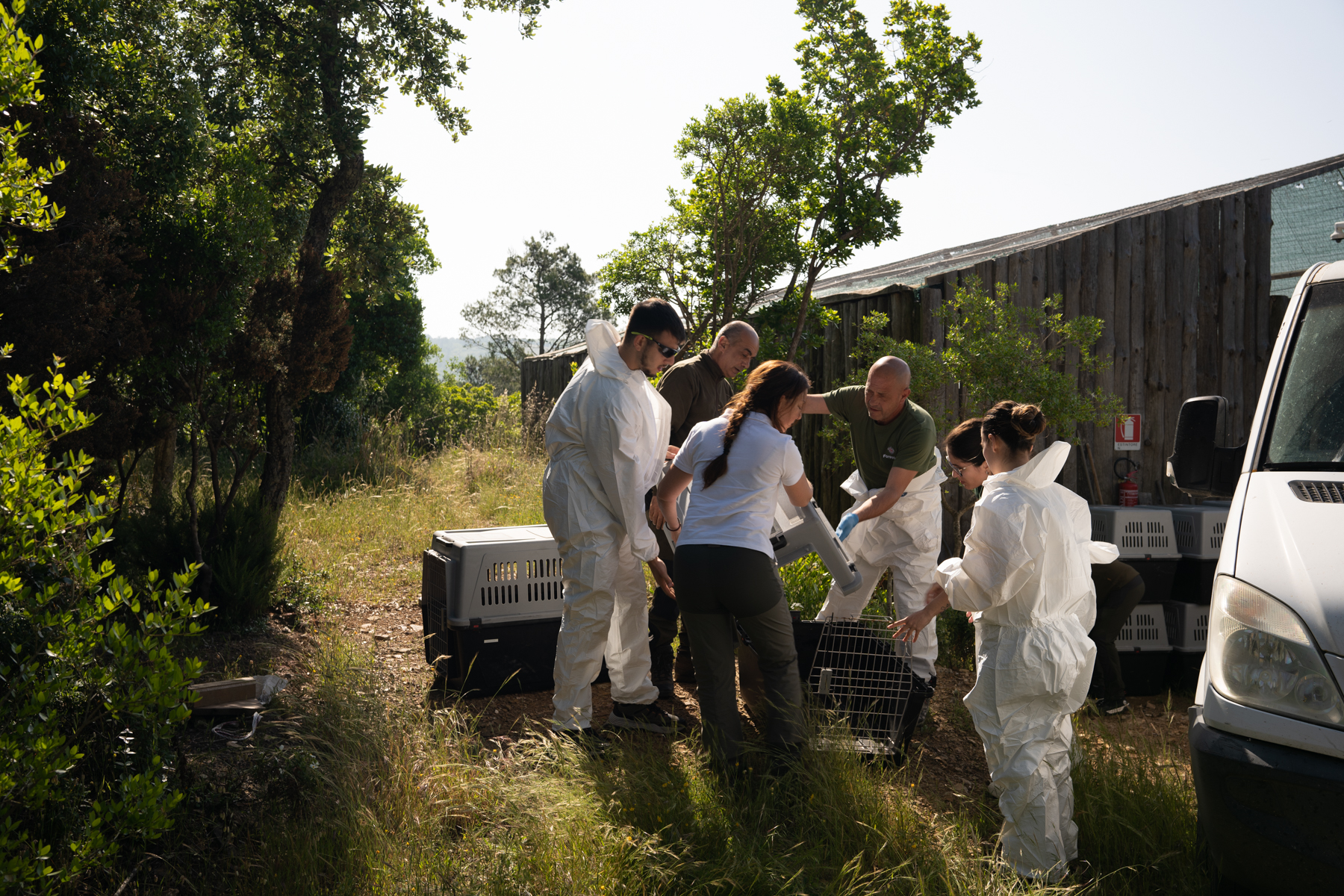The kick-off meeting for the EU-funded project “Conservation of Black and Griffon vultures in the cross-border Rhodope Mountains”, led by Rewilding Europe in partnership with Rewilding Rhodopes Foundation, Bulgarian Society for the Protection of Birds/Birdlife Bulgaria, WWF Greece, Vulture Conservation Foundation and Hellenic Ornithological Society/BirdLife Greece, was held last week in Haskovo (Bulgaria).
The project aims to recovery and further expand the black and griffon vulture populations in this part of the Balkans, mainly by improving natural prey availability and reducing mortality factors such as poaching, poisoning and electrocution and collision with power lines.
Although black vultures are increasing in Western Europe (Portugal-Spain-France), there is only one colony left in the whole of the Balkans, in the Dadia Forest, in the Greek part of the Rhodope Mountains. This project will serve to enhance the conservation of this population, and will also contribute to the conservation of the main griffon vulture colonies in Bulgaria.
To achieve this, a large number of actions are planned for, including tagging of vultures to study their dispersal and movements; increase of their food availability through releases of wild ungulates; creating a trained dog unit to locate poison baits; environmental education at the Vulture Information Centre in Madzharovo; support for local businesses linked to vulture watching (including building of professional hides); support of related local products; and insulating power line poles and mounting bird diverters to avoid collision.
The project, funded 75% by the EU LIFE fund, stated in January 2016, and the project team has now met for the first time to plan in earnest all the actions. The VCF will be respo9bsle to do an evaluation of the poisoning situation in Greece-Bulgaria, and will also organize two international workshops on supplementary feeding strategies and on vet products and the risk of indirect poisoning of vultures.
The cross-border Rhodope Mountains are a unique landscape, with a very high biodiversity and a number of important Natura 2000 sites. Black vultures that breed in Greece forage in Bulgaria and griffon vultures that breed in Bulgaria feed in Greece. The area is also used by immature and non-breeding griffon vultures coming from Croatia and Serbia. The project also will deliver transboundary cooperation between experts and organisations from different countries.
The history of the Dadia black vulture colony
The only colony of the black vulture in the Balkans is located in the National Park of the Dadia-Soufli-Lefkimi forest (Dadia NP) in the Rhodope Mountains in Greece, about 25 km from the border with Bulgaria. At the end of the 60’s the population was down to 4-5 pairs and 26 individuals. During 1987-1993 the population increased from 6 pairs to 20 pairs, breeding only in Dadia NP. In the period 1994-2005 the population remained stable with around 19 pairs, while since 2006 it increased to around 28 pairs, some years even up to 35 breeding pairs.
In Bulgaria the black vulture was common and widespread in the past, but nowadays it is considered as an irregular breeder in Bulgaria. The last confirmed breeding occurred in 1993 in the Studen Kladenets reserve in the Eastern Rhodopes. Currently the area is part of the home range of the black vultures breeding in Dadia NP.
Griffon vulture in the Rhodopes
The griffon vulture was a numerous and widespread species in Bulgaria in the beginning of the 20th century. However, within a short period of only some decades, the species became almost extinct, mainly due to poisoning and deliberate persecution. Between 1960 and 1970 the last known breeding colonies of the griffon vulture disappeared and some authors considered the species as extinct in Bulgaria.
The species was rediscovered in 1978 in the Eastern Rhodopes – 28 birds and 1 breeding pair were found. Significant conservation efforts of the Bulgarian Society for the Protection of Birds (BSPB) since 1989 led to the slow increase of this population. Within 25 years, the population here reached 70 pairs in 2014, while 161 birds where counted during a roost count in November 2012.
In Greece, the griffon vulture was considered as the most common vulture species in the past. In the 80’s the population was estimated at 400-450 breeding pairs, 200 of which were in Crete. While in Crete it is stable or increasing, the continental Greek population has collapsed. After 1990, 13-15 colonies disappeared and at least a 60% decrease in the former range was registered, mainly due to poisoning. Nowadays, only about 20-30 pairs in five small colonies remain in Greece, and the population is still decreasing. The Greek part of the Rhodope Mountains, with the foothills in the Evros province, nowadays harbours the most important stronghold of the griffon vulture in continental Greece (10-15 pairs).
See also https://www.rewildingeurope.com/news/life-bison-and-life-vultures-projects-kicked-off/





